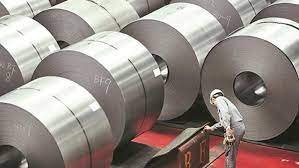NEW DELHI, Oct 12: India’s existing steel and cement plants, which play a vital role in the country’s
economic development, will require Rs 47 lakh crore in additional capital expenditure (CAPEX) to
achieve net-zero carbon emissions, according to a new study.
India is the second-largest producer of steel and cement in the world. But both are emission-intensive
processes making these hard-to-abate industries.
The study, the first-of-its-kind calculation of the cost of decarbonising these industries, also pointed out
these two sectors will need Rs 1 lakh crore each year in additional operational expenditure (OPEX) to
achieve net zero.
Net zero means achieving a balance between the greenhouse gases put into the atmosphere and those
taken out.
The analysis by the Council on Energy, Environment and Water (CEEW) also found that an 8 to 25 per
cent reduction in steel emissions and a 32 per cent reduction in cement emissions is possible without
any price increase by adopting efficient technologies such as waste-heat recovery and energy efficient
drives and controls.
Moreover, a 33 per cent reduction in the cumulative carbon emissions of the steel and cement
industries could be achieved with just 8.5 per cent of the total additional CAPEX and 30 per cent of the
additional annual OPEX, the study found.
This reduction can be done without considering the need for carbon capture and with the requisite
supply of alternative fuels and raw materials.
Arunabha Ghosh, the CEO of CEEW, said, “Decarbonising India’s steel and cement industries will not
only help it meet its climate ambitions but also make its industries market competitive and future-ready
in a world with increasingly sustainability-driven regulations.”
“CEEW’s work with these marginal abatement cost (MAC) curves provides the necessary foundation to
quantify the potential for emissions mitigation from these heavy industries and the associated costs.
Such analysis is necessary to help inform policies and systematically pursue India’s net-zero targets in
pursuit of decarbonisation without deindustrialisation,” Ghosh said.
CEEW’s assessment indicates that the Indian steel industry emitted 297 million tonnes of carbon dioxide
in 2021-22 in crude steel production. It translates to an average emission intensity of 2.36 tonnes of
carbon dioxide per tonne of crude steel (tCO2/tcs) compared to the world average of 1.89 tCO2/tcs.
The cost of producing this steel would increase with the tightening of emission intensity limits.
The study found that depending on the production route taken, the technology chosen and the
prevailing costs of carbon capture, utilisation, and storage (CCUS), near-net-zero steel could be 40–70
per cent more expensive than current costs.
Here, CCUS will be critical for decarbonising the steel industry with the potential to abate as much as 56
per cent of the emissions generated from the sector. But CCUS is still in its nascent stages and will need
to be tested at scale before implementation.
The Indian cement industry is among the most energy-efficient in the world. However, apart from the
use of fossil fuels, carbon emissions are inherent to the production process due to limestone processing.
CEEW assessment indicates that the industry emitted 218 million tonnes of CO2 while producing 337
million tonnes of cement in 2018-19.
Here too, carbon management mechanisms have the potential to abate a major share of emissions, but
the cost is higher than other alternatives such as energy efficiency, use of alternative fuels and raw
materials and reduction in clinker factor.
The study shows that about 50 per cent of cement plants in India need access to CO2 pipelines for
carbon capture and storage. These pipelines can be constructed using existing natural gas pipelines
right-of-way. Without such pipelines, these plants cannot opt for CCS. (PTI)







